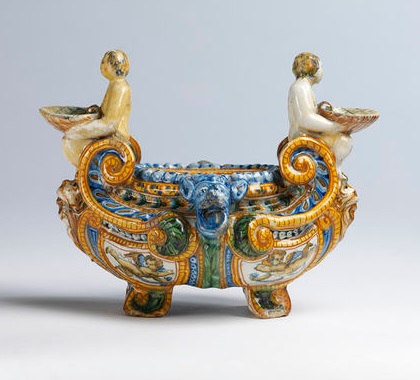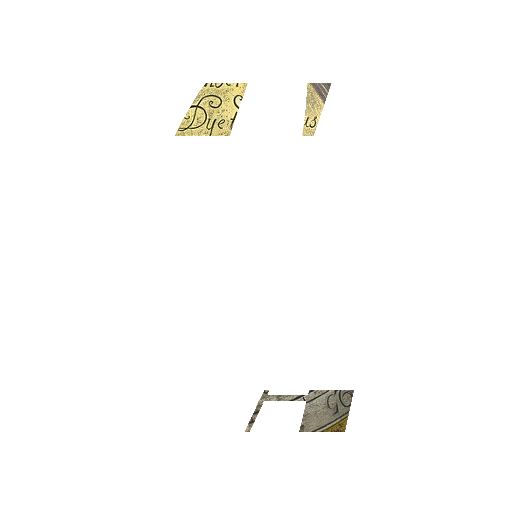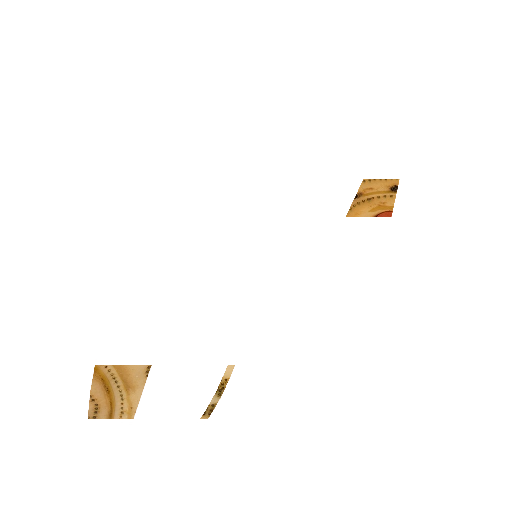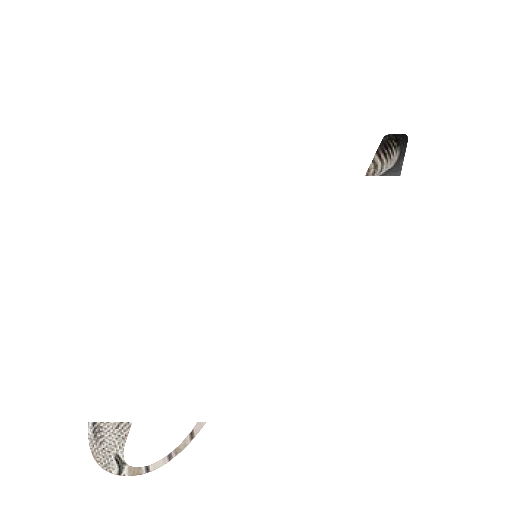Ubino majolica, majolica also spelled maiolica, Italian tin-glazed earthenware made in the city of Urbino, which from about 1520 dominated the market. Early wares, mostly dishes, are decorated with narrative scenes that typically cover the entire surface. The narrative scenes are taken from the Bible, from Classical mythology, from Classical and contemporary history, and from poetry and are painted in a range of colours, in which brilliant yellow, orange, and brown predominate. This pictorial, or istoriato, style owed much to contemporary painting and to woodcuts and engravings published in the late 15ᵗʰ and early 16ᵗʰ centuries. Later wares were decorated in a style called grotesque, which consisted of motifs copied from the painter Raphael, who in turn adopted them from motifs found during excavations of Nero’s Golden House in Rome in 1509. This purely decorative style was more suited to the intrinsic nature of pottery forms than the istoriato style, which was based on the conception of a dish or plate as the mere vehicle or support of a painting.
Several distinguished painters of pottery are known. The most notable are Nicola Pellipario, who worked at Castel Durante originally and at Urbino from 1528, and Francesco Xanto Avelli of Rovigo (flourished 1529–42). Nicola, who introduced and developed the istoriato style at Urbino, painted in the workshop of his son Guido (who took the name Fontana), drawing from engravings after the painter Raphael. Finely modeled figures, sometimes singly, sometimes in complex groups in architectural settings, were painted over the entire surface of the dish in an illusionist manner, with much of the drama and restless movement of Raphael’s later work. Guido continued in this tradition, and in his workshop dishes, plates, roundels, and plaques were produced in large quantities between 1530 and 1580. Avelli favoured subjects from Ovid’s Metamorphoses, an influential edition of which, illustrated with woodcuts, had appeared in 1497. He took his themes from the Bible, from the poet Ludovico Ariosto (1474–1533), and from contemporary events.
The later style, grotesque, also derived from Raphael’s paintings, was introduced by Guido Fontana’s son Orazio around 1560–70. At first it consisted of little grotesques and arabesques painted in a continuous band in yellow, brown, blue, and green on a ground of white around the rim of the plate, with the narrative, or istoriato, portion shrunk to a roundel in the centre. Later the istoriato style was totally supplanted by the grotesques. Majolica production in Urbino declined in the late 17ᵗʰ century.
Passeri, in his "History of Majolica Wares," states that it was not at Urbino itself, but at Fermignano, a chateau on the banks of the Metauro, where the beautiful faience was made by artists many of whom were eminent in their profession, whose names have been preserved and honoured from the 16ᵗʰ century to our own days. If that historian is correct, Urbino does not signify the name of the town, but the protection of the successive Dukes of Urbino, under whose favour and encouragement this ceramic art flourished from about 1477 to 1630. Without labouring the subject, it may be well to notice that besides Urbino, Castel Durante, Gubbio, and Pesaro belonged to the duchy of Urbino. Another writer, Pantaleoni, in his " Notice on the paintings in Majolica made at Urbino," gives the names of some of the early painters, of whom the best known is Francesco Xanto Avelli da Rovigo, whose first pieces were signed in full and dated, though the later ones bore only one or two initials. Apparently his work, which is more or less excellent, occupied the years from 1530 to 1542.
Many of the artists were of Castel Durante origin. Such inscriptions as " fatta in la botega de Guido da Castello Durante, in Urbino, 1528," and " in botega de M Guido Durantino, in Urbino, 1535," indicate this origin. The Fontana family had its origin in Guido Durantino, whose original family name was Pellipario. He adopted Fontana as his surname and transmitted it to his children, of whom his son Orazio, who died in 1571, was the most celebrated of the Urbino painters on majolica, his works being remarkable for their exquisite design and superb execution. His flesh tints were first delicately shaded in blue, with fine effect upon ware in which the potting and glazing were both excellent. Some specimens have been found with all the letters of his name Orazio, or rather " Oratio," in a monogram; but the letter O between two points is a more common mark, though some times " fatto " or " fate in Urbino in botega de Oratio Fontana " and other inscriptions are found.
Nearly all of the majolica attributed to Urbino bears on the reverse a distinctive decoration-not a mark, but an evidence of origin which it is useful to remember: on the white enamel ground are three concentric rings in orange, which are not only applied to dishes, plates, and cups, but also to vases, pharmacy-jars, and all other pieces produced in the ateliers of Urbino. These wares are usually covered with an even glaze over a pinkish or pure white ground, having no other decoration upon the reverse. There are some few exceptions to this rule, but they are rare.
Amongst other men noted as painters at Urbino whose works have been identified by the marks, are Nicola da Urbino, Gianmaria Mariani, 1542, and AIfonso Patanazzi, 1606. The first painted classical figures with great skill, and in his monogram may be seen all the letters of the name " Nicola." The Patanazzi-Alfonso, Vincenzio, and Francesco-were the last group of artists working in Urbino in the first part of the 17ᵗʰ century. The decadence followed.
Resembling the Urbino ware are some fine pieces from the hands of Francesco Durantino. Such might have been painted at Urbino, though it is known that he worked elsewhere. His initials F.D, with the date, form his usual mark. Another artist migrating to different fabriques was Giulio da Urbino, who signed his works with this name and added the name of the fabrique where he was at the time working. Other names are mentioned, such as Guido Merlini in 1542, and Gironimo Urbin in 1585, but no particulars of them are forthcoming, nor are there any of a few artists whose signatures are now and then found.
When the ducal patronage failed the artists were unable to continue their work. The Patanazzi, aided by J. B. Boccione, tried to maintain their botega at Urbino, but could not. Then later came a Frenchman, who, in the city which had been the home of Italian majolica, set up a factory and produced ware of which a specimen in the museum at South Kensington bears this inscription: " Fabrica di majolica fina di monsieur Rolet, in Urbino a 28 aprile 1773." Well might Jacquemart say: " Bitter derision! would it not be cruel for the Italians who had been our teachers thus to see our degenerate products instal themselves there amongst them in excluding the great forms of art."
AN URBINO MAIOLICA PILGRIM BOTTLE
Fontana Workshop (c1560-c1580)
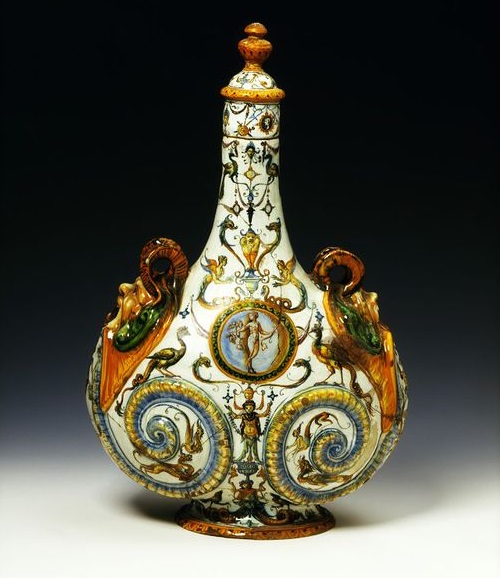
AN URBINO MAIOLICA CANDLESTICK
Guido Durantino (c1535)
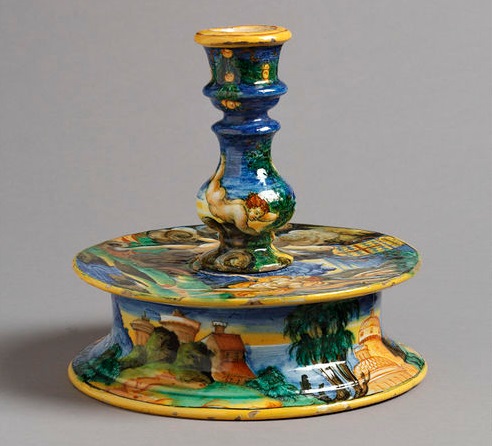
AN URBINO MAIOLICA PLATE
Nicola da Urbino (born c1475)
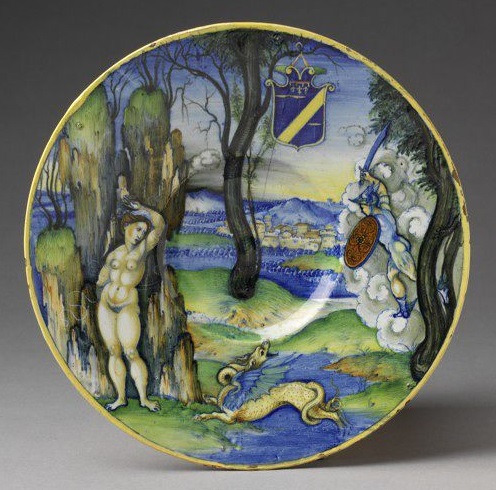
AN URBINO MAIOLICA PLATE
Nicola da Urbino (born c1475)
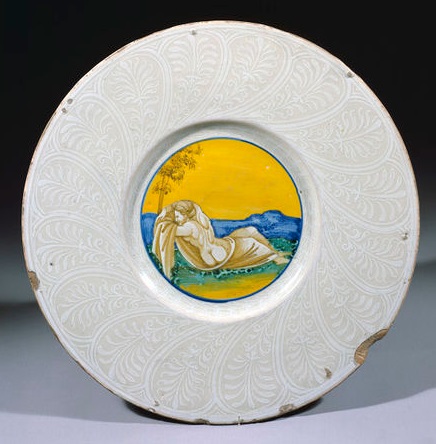
AN URBINO MAIOLICA PLATE
circa 1525
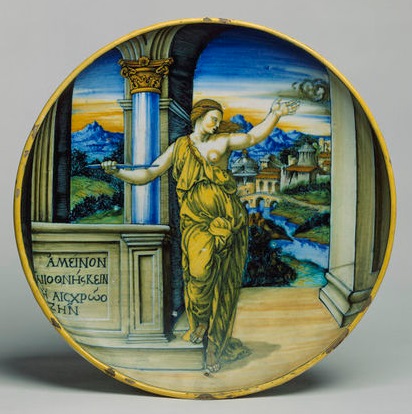
AN URBINO MAIOLICA TOP-HANDLED EWER
Fontana Workshop (c1550-c1560)
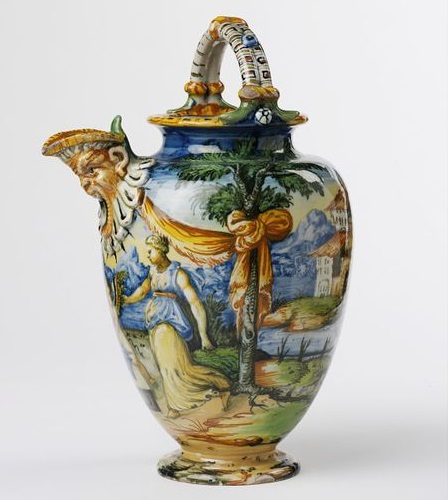
AN URBINO MAIOLICA CRUET
Fontana Workshop (c1550-c1560)

AN URBINO MAIOLICA PANEL
circa 1530
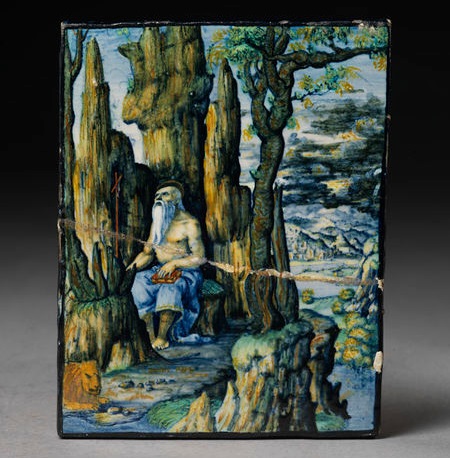
AN URBINO MAIOLICA SALT CELLAR
circa 1590
